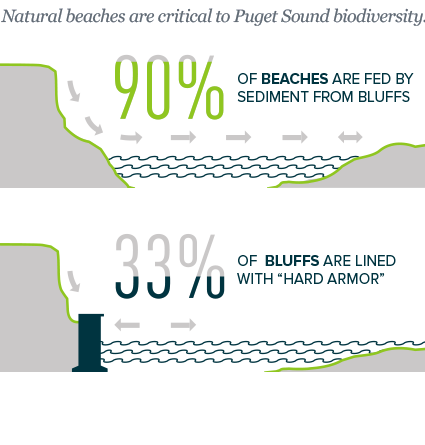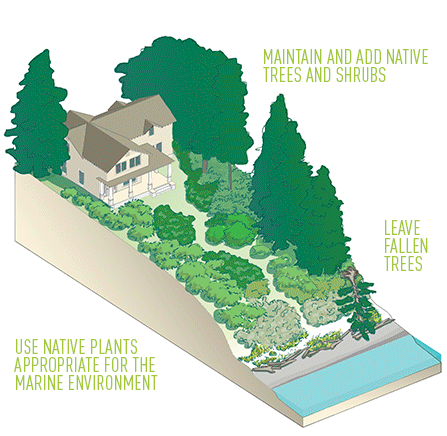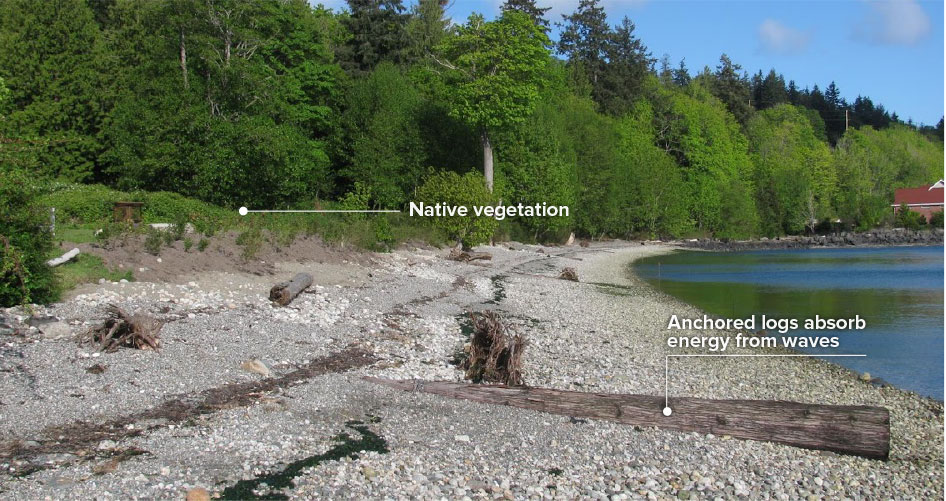OVERVIEW
Many waterfront properties need no erosion protection at all. But if your property has moderate to high erosion risk or high wave energy, you will likely have some good soft shore protection options that mimic nature while protecting your property. Soft shore protection techniques generally include some combination of native plantings, anchored drift logs, gravel berms, sand replenishment, and site recontouring.
Soft shore protection looks and feels natural, but it is carefully designed to reduce erosion. Many environmental engineers agree that it provides better erosion control in many places than bulkheads or other hard armor. Soft shore solutions are not without environmental impact, but they are far less damaging than bulkheads because they do not displace habitat for fish and wildlife. In some places where bulkheads have been replaced with soft shore protection, species such as small forage fish have gradually returned.

CONSIDERATIONS

Design Techniques To Consider:
- Beach nourishment
- Logs and berms
- Landscaping
- Drainage
- Structure placement
- Resloping
Permits are required for installing soft shore protection, but you can get help with the process from Shore Friendly partners or other resources in your county. Some programs offer free permit-ready designs for bulkhead removal and installing soft shore protection. Most Puget Sound counties also offer tax breaks for shoreline conservation projects that can reduce your property taxes by as much as 90%.
Soft shore protection methods are all more natural and restorative than hard armor and can protect and enhance your property.Soft shore protection projects are often accompanied by drainage improvements, such as adding pipes or culverts to divert rainwater away from slopes, repairing leaky drainage pipes and septic systems, and diverting drainage from driveways and roofs.



